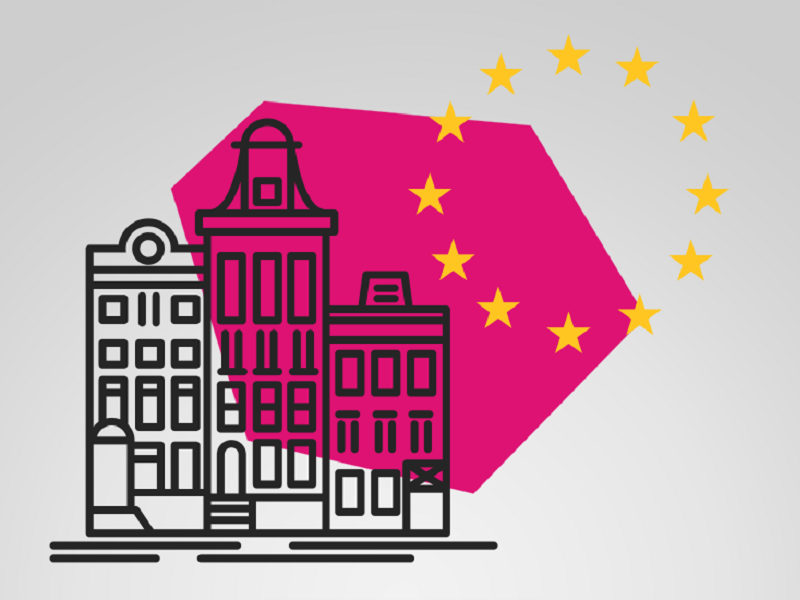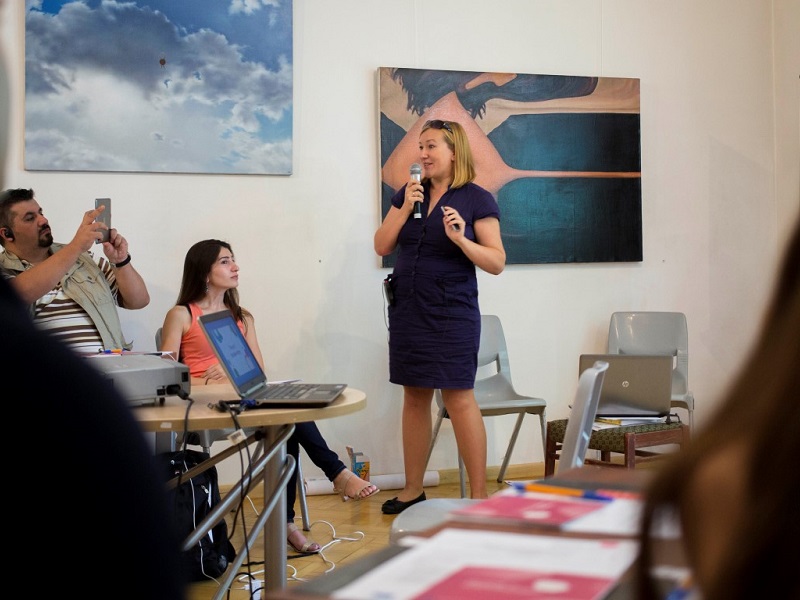
Creative Europe: 12 Tips for Future Participants
Consider your priorities
The Creative Europe programme covers 18 different sectors: ranging from literature to visual art, cultural heritage, fashion, architecture and dance. It also offers four special programmes that you can apply to: literary translation, European networks, European platforms and cooperation projects.
To apply, you must be an officially registered institution, which has been operating in the cultural field for at least two years. You can find out more about the conditions for participation and application deadlines here.
But no matter which cultural sector your organisation belongs to, your new project should be guided by those values fostered by Creative Europe: mobility across borders, innovative approaches for the functioning of your institutions and the sector as a whole, as well as building and developing an audience.
Overcome borders
To become a participant of Creative Europe, a brilliant art idea is not enough. It is necessary to consider your activities in the general European context.
Creative Europe is, first and foremost, work at international level. Cultural, creative and audio-visual organisations have to look beyond their borders and cooperate with other European countries. But it is also necessary to explain why it is so important for you to make use of this mobility: to improve professional skills through cooperation with partners, to get access to innovation, to find a new audience.
Go beyond your own boundaries
Creative Europe is not a programme to raise funds for the operation of a museum or institution. The issue here is not how good your art is or how great the performances you organise are. It is necessary to ask the following questions: Do we want to work more effectively as an organisation? Do we want to develop institutional capacity of a specific sphere of culture? Since Creative Europe is not about the output: performances or concerts.
It is important to have a strategy for your development, to understand how you wish to develop in a few years, and how Creative Europe can help you achieve that. This is an opportunity for an organisation to be more ambitious.
Cooperate
For all programmes, except literary translations, you will have to find European partners. The most eligible ones are cooperation projects that not only cover EU countries and the European economic space but also countries of the Eastern Partnership, which Ukraine is part of. And the idea is that through such cooperation, through interaction in the cultural space, there will be a transfer of skills, approaches and knowledge within the framework of cultural cooperation. Cooperation projects are not the sum of national projects. There must be added value. Organisations have to learn from one another.
For applications for small-scale cooperation projects, which can receive up to €200,000, you need at least three participants from three countries. For large-scale projects, at least six participants are necessary and it is possible to receive up to €2 million. There should be a project leader, an organisation that will draft the joint application and be responsible for the entire process. But it is better for participants from Ukraine to gain experience and start with a regular partnership.
Give a general response to big challenges
Within the framework of the cooperation project, a common problem and common methods for resolving it are determined. Partners try respond together to an important question. For example, there are no interesting ways of conducting art residencies. However, we, partners from the UK, Ukraine, Poland and Germany, have worked out an innovative approach to implement them and thus propose to check it and implement it at the European level. It is also important that your approaches complement one another. Usually, each country tries to reinvent the wheel on its own, whereas Creative Europe gives the idea of joining efforts and knowledge.
Climate change, migration, education... In partnership projects, you have to give your response to these great challenges by bringing different experiences and approaches.
Look for like-minded partners
The search for partners for Creative Europe projects is like trying to find a romantic partner on the Internet: you never know who you can trust.
Attend international cultural events like the Culture Forum in Brussels. Join existing European culture networks; there you can find organisations that think just like you. Search for successfully funded projects on the websites of national Creative Europe desks. Register in the programme database. Refer to international missions: the British Council, Institut Français and others that can recommend like-minded organisations.
This year’s deadline for application for a cooperation project is 7 October. Therefore, it is important to already start looking for partners. For example, the British Council announced a call for proposals for grants for travel costs for British or Ukrainian organisations, so they can begin or deepen cooperation in the future and create a joint application for the Creative Europe programme.
Find support
Creative Europe only offers 50-60% of a project’s budget and requires a contribution from the participants. But don’t be frightened. If your organisation is unable to provide the required sum, it can be raised through various funds, grants, with the support of the state and local authorities. You can use the income from the project’s activities, such as tickets for performances and concerts. Moreover, there are no conditions on the internal distribution of this contribution among partners: an organisation with a big budget may pay, what’s important is you do your job perfectly and comply with the partnership agreement.
National Creative Europe Desks will be able to answer your questions and advise you on filling in your application. The national desk is an independent structure that is only responsible for communication between programme participants and the European Union. But the selection of applications will be carried out in Brussels in a transparent procedure.
Build your audience
Building an audience is one of the priorities of the Creative Europe programme. And education is an integral part of this process. There should be more education in cultural organisations and more culture in the education process.
Cultural institutions need to cooperate with kindergartens, schools and universities, as well as organise lectures, seminars and summer camps. There is a European Programme called Young Critics that gives young people the opportunity to be critics of organisations. You invite them to observe your work and afterwards they write a review as critics.
It is important to create school and youth programmes. Adolescents like to spend time away from their parents and teachers with their friends. And some theatres organise screenings where only youth is invited – they love it!
You need to think of how you can collaborate with other spheres. For example, Latvian scientists decide to highlight environmental issues by working with the philharmonic, so they launch the Nature Music Hall music project.
Make culture accessible
Culture should be accessible to all, including people with special needs. Only at first glance does the field of culture look so open, but in reality vulnerable groups are left behind: people with disabilities, the homeless and residents of the suburbs.
One positive example can be the online broadcasting of art content: this facilitates people’s access to culture. While the Albert and Victoria Museum in London gets 2 million visitors a year, their website gets 20 million. Let art come to the people and not the other way around.
Involve your audience
You can involve your audience at different stages of the project: creation, presentation and reflection after the event. For example, within the framework of the TorinoFilmLab, the audience itself created film screenplays via Facebook. Or one of the theatres of Rotterdam decided to respond to the fact that a large number of migrants started to live nearby – they talked to them about their preferences and adapted their programme to their wishes. Here, there is, of course, a risk: the audience should not always dictate everything. But the dialogue itself is important as is its openness.
Always analyse the programme through the eyes of visitors. When we prepare something, we find it hard to accept criticism. It is necessary to establish an emotional and not a consumer relationship with the audience, to talk with them, hear them. People do not just want art, they want to be part of it.
Appreciate your surroundings. The audience wants to know that you are a good neighbour, that you care about the people who live nearby.
Communicate strategically
Communication and promotion of the project, disseminating information about its results is one of the criteria in the evaluation of Creative Europe projects. All cultural organisations should develop their communication strategies. It is not enough to say that you will disseminate information, it has to be a strategic approach.
Information is what is going out. Communication is what is going through. Therefore, the transmission channel is important. You should determine what share of your audience would be able to see your message in a magazine, and what share on social networks. For any communication strategy it is important to set yourself the goal of the target audience, channels through which this material will be appropriate for your audience. And more importantly, you should show what results you expect and how you will measure these results. And this is part of the application you submit for Creative Europe.
Set trends
Many cultural managers say that nobody wants to hear them, write about them and there is only one policy. But there is a trend now for culture, more and more people are showing that it is significant for the image and economy of Ukraine. For the media to come to you, you have to be part of the trend in Ukraine or the world, or know how to argue properly as to why your initiative is important and to which of society’s sore points it is responding.
See also:
Pablo Rosselló: UA/UK COLLABORATION DEVELOPMENT AWARDS (Arts)
Christoph Jankowski: Creative Europe Desk UK
Anastasia Nurzhynska: Communication and promotion of cultural projects
Source: http://culturepartnership.platfor.ma/kreativna-yevropa/




